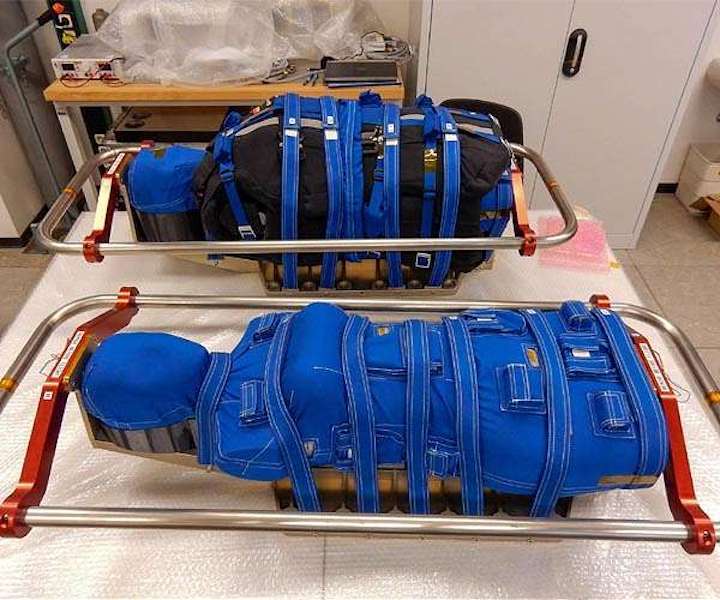3.05.2022

MARE mannequins Helga and Zohar ready for transport.
In 2022, NASA's Artemis I mission will send a spacecraft capable of supporting a human crew to the Moon for the first time in almost 50 years. On this uncrewed test flight, it will be the twin measuring mannequins Helga and Zohar on board the Orion capsule. The MARE experiment devised by the German Aerospace Center (Deutsches Zentrum fur Luft- und Raumfahrt; DLR), will use two identical 'phantoms' representative of the female body to investigate radiation exposure throughout the flight, which may last up to six weeks.
The mission is vital in light of NASA's plan to send the first woman to the Moon during the Artemis programme. Researchers at the DLR Institute of Aerospace Medicine in Cologne developed the experiment and have now delivered it to NASA's Kennedy Space Center (KSC) for installation. A new radiation protection vest also forms part of the experiment and will undergo testing. Artemis I is now planned to launch in summer 2022. The assembly and installation of the measuring mannequins is scheduled to take place approximately four weeks before the launch.
The radiation to which the human body is exposed is significantly higher outside Earth's protective magnetic field. The female body is more sensitive to this radiation than the male body in organs such as the breasts. Overall, radiation is one of the greatest challenges posed by longer astronautical missions into deep space, such as those to Mars.
"With MARE, the largest radiation experiment ever to be flown beyond low Earth orbit, we are looking to find out exactly how radiation levels affect female astronauts over the course of an entire flight to the Moon, and which protective measures might help to counteract this," says Thomas Berger, Head of the Biophysics working group in the Radiation Biology Department at the DLR Institute of Aerospace Medicine.
"Over the past few months at the DLR sites in Cologne and Bremen, we have been studying the phantoms - Helga and Zohar - thoroughly, including conducting tests to determine the effects of the vibrations that they will be subjected to during the launch of the Artemis I mission. The aim is to ensure that everything runs smoothly later at the Kennedy Space Center."
The twin mannequins are modelled on female bodies. In general, women are at greater risk of suffering cancer, so different radiation boundary values always apply to female astronauts than to their male colleagues. However, so far there have been no sex-specific measurements using phantoms in space.
"More specifically, both mannequins are made from materials that mimic the human bones, soft tissues and organs of an adult woman. Over 10,000 passive sensors and 34 active radiation detectors are integrated into the 38 slices that make up the mannequins," explains MARE Project Manager Thomas Berger. Both phantoms are 95 centimetres tall and weigh 36 kilograms.
One of them - Helga - will fly unprotected to the Moon, while the other - Zohar - will wear a newly developed radiation protection vest, called the AstroRad. By comparing the two sets of data, it will be possible to determine the extent to which the vest developed by the DLR's Israeli partners could protect an astronaut from harmful radiation exposure.
Quelle: SD
